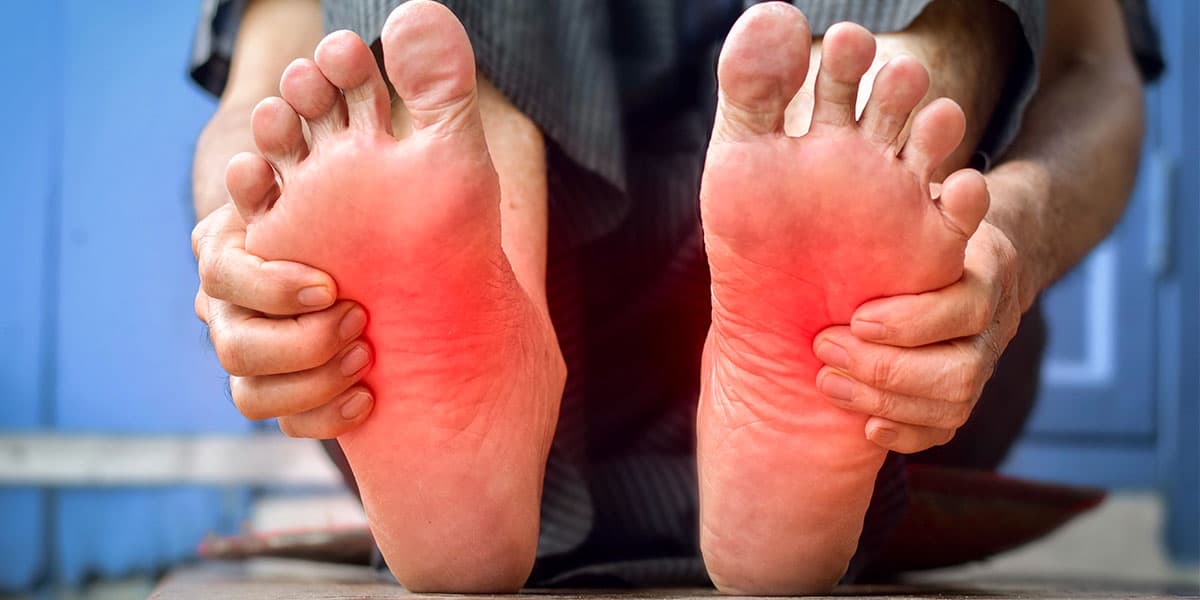- Home
- Foot & Ankle Conditions
- Sports Injuries
- Sesamoid Injuries
Sesamoid Injuries: Sesamoiditis and Sesamoid Fracture
- Published 11/1/2023
- Last Reviewed 12/7/2023
In this video, we discuss Sesamoiditis's causes, symptoms, and treatment options.
What's the sesamoid bone?
A sesamoid bone is a tiny bone embedded in a tendon. There are two of these bones in the ball of the foot behind the big toe joint, an area known as the first metatarsophalangeal joint (MTP). They help glide the toe up and down during activity, much like the kneecap, the body’s largest sesamoid bone.
20,592 Total 1st Party Reviews / 4.9 out of 5 Stars
 Dr Briskin was thorough and explained my choices. I have been satisfied each time I have needed to see him. Thank youSharon K.
Dr Briskin was thorough and explained my choices. I have been satisfied each time I have needed to see him. Thank youSharon K. My experience was very good. Dr. Kelman was quick but thorough. He has a good sense of humor and is very pleasant.Isabel B.
My experience was very good. Dr. Kelman was quick but thorough. He has a good sense of humor and is very pleasant.Isabel B. You were recommended by a friend and I will surely pass that to my friends shouldmany be inPhilip M.
You were recommended by a friend and I will surely pass that to my friends shouldmany be inPhilip M. He is informed,smart and current in information. Helped me a lot. Recommended Medicine for my toe nails,he cultured first and m...Theresa M.
He is informed,smart and current in information. Helped me a lot. Recommended Medicine for my toe nails,he cultured first and m...Theresa M. Excellent, professional office well located near LAX and airport courthouse.Laura S.
Excellent, professional office well located near LAX and airport courthouse.Laura S. Would rather deal directly with the local office.Andrea G.
Would rather deal directly with the local office.Andrea G. Dr. Johnson is terrific: competent, caring, and communicative. Also, he shows he is a real human, not just filling a role of do...Sharon S.
Dr. Johnson is terrific: competent, caring, and communicative. Also, he shows he is a real human, not just filling a role of do...Sharon S. Great care here. No nonsense, professional staff who are kind compassionate and completely on top of their skills. Dr Bavarian ...David F.
Great care here. No nonsense, professional staff who are kind compassionate and completely on top of their skills. Dr Bavarian ...David F. Your staff are always caring and professional.
Your staff are always caring and professional.
I like Dr Bob and Dr Gina very much.Linda T. You guys are really good over there. Okay, I love my doctor jafari. He's very knowledgeable. Makes me feel comfortable and yeah...David J.
You guys are really good over there. Okay, I love my doctor jafari. He's very knowledgeable. Makes me feel comfortable and yeah...David J. Dr Johnson was really lovely and took the time to make my young son comfortable and at ease. He was honest about not being spec...Conaill H.
Dr Johnson was really lovely and took the time to make my young son comfortable and at ease. He was honest about not being spec...Conaill H. Dr. Naei and her staff are pleasant and accommodating. Dr. Naei listens and does everything within her power to assist the pati...Carmen F.
Dr. Naei and her staff are pleasant and accommodating. Dr. Naei listens and does everything within her power to assist the pati...Carmen F.
-
 Listen Now
Should I See a Podiatrist or Orthopedist for Foot Pain and Ankle Problems?
Read More
Listen Now
Should I See a Podiatrist or Orthopedist for Foot Pain and Ankle Problems?
Read More
-
 Listen Now
Non-Surgical Treatment for Plantar Fasciitis – What Are Your Options?
Read More
Listen Now
Non-Surgical Treatment for Plantar Fasciitis – What Are Your Options?
Read More
-
 Listen Now
Bunion Surgery for Athletes: Can We Make It Less Disruptive?
Read More
Listen Now
Bunion Surgery for Athletes: Can We Make It Less Disruptive?
Read More
-
 Listen Now
Do Blood Pressure Medicines Cause Foot Pain?
Read More
Listen Now
Do Blood Pressure Medicines Cause Foot Pain?
Read More
-
 Listen Now
Bunion Surgery for Seniors: What You Need to Know
Read More
Listen Now
Bunion Surgery for Seniors: What You Need to Know
Read More
-
 Listen Now
How Many Steps Do I Need A Day?
Read More
Listen Now
How Many Steps Do I Need A Day?
Read More
-
 Listen Now
How To Tell If You Have Wide Feet
Read More
Listen Now
How To Tell If You Have Wide Feet
Read More
-
 Listen Now
Top 10 Non-Surgical Treatments for Morton's Neuroma
Read More
Listen Now
Top 10 Non-Surgical Treatments for Morton's Neuroma
Read More
-
 Listen Now
Moore Balance Brace: Enhance Stability and Prevent Falls for Better Mobility
Read More
Listen Now
Moore Balance Brace: Enhance Stability and Prevent Falls for Better Mobility
Read More
-
 Listen Now
What Are Shin Splints?
Read More
Listen Now
What Are Shin Splints?
Read More
-
 Listen Now
What To Do When Your Toenail Is Falling Off
Read More
Listen Now
What To Do When Your Toenail Is Falling Off
Read More
-
 Listen Now
15 Summer Foot Care Tips to Put Your Best Feet Forward
Read More
Listen Now
15 Summer Foot Care Tips to Put Your Best Feet Forward
Read More
-
 Listen Now
Pediatric Bunion Surgery
Read More
Listen Now
Pediatric Bunion Surgery
Read More
-
 Listen Now
What Is Erythromelalgia?
Read More
Listen Now
What Is Erythromelalgia?
Read More
-
 Listen Now
Swollen Feet During Pregnancy
Read More
Listen Now
Swollen Feet During Pregnancy
Read More
















